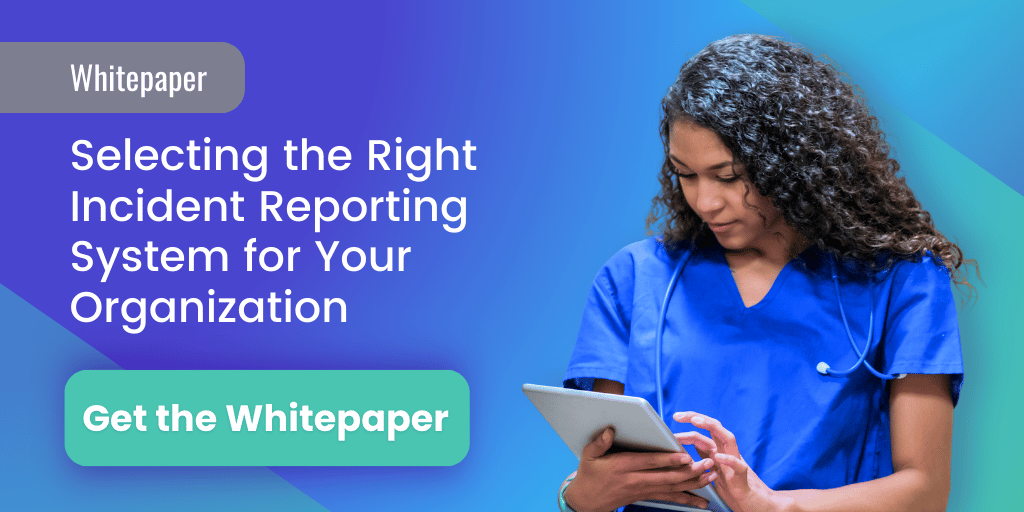2 min read
How Does a Healthcare Incident Reporting System Work?
Performance Health Partners
May 23, 2023

As patient safety continues to be a cause for concern worldwide, many organizations are implementing incident reporting software to identify safety risks and facilitate learning. But how does a healthcare incident reporting system work? Read on to find out.
Incident reporting systems have long been used in high-risk industries – nuclear, railway, fire, and aviation – with tremendous success. Although these systems are relatively new to healthcare, they are quickly becoming a cornerstone for improving patient and employee safety, according to the World Health Organization.
Healthcare incident reporting software is designed to gather information around safety at an organizational level which can be then translated to individual or organizational learning. Moreover, analyzing incident reports can be helpful in creating new policies and procedures to reduce the likelihood of recurrence of past healthcare incidents.
An incident reporting system also provides frontline caregivers a mechanism to raise concerns, providing voice to clinicians.
Although different types of incident reporting software have their own unique functionalities, the most effective systems, like Performance Health Partners’, are built specifically with healthcare in mind. The healthcare incident reporting system works as follows:
Step 1: Staff submits report
The healthcare professional who witnessed the event (medication error, employee injury, fall, medical device malfunction, etc.) or near miss – or the first staff member who was notified about it – submits a report using the incident reporting software.
Our system was designed to make this step as quick and easy as possible with a user-friendly form that can be submitted in under two minutes.
Step 2: Report is escalated to appropriate leadership
Collecting incident data is just the first step in the incident management process. To identify and correct patient safety issues, the right people have to be able to access, sort, organize, and analyze that data.
An effective healthcare incident reporting system is equipped with immediate email notification alerts that notify risk management, the department supervisor, and/or other relevant leadership to review the reported event.
Step 3: Review and follow-up
Leadership reviews the event, documents follow-up actions, and loops in additional team members as necessary.
Step 4: Gain insights
Each patient safety event or near miss is the result of a specific cause, and correcting the root cause can easily avoid events of that type from happening again in the future.
In this sense, a root cause analysis of an incident is an essential investigation step for all healthcare organizations to ensure their staff and patients are safe under most conditions. An effective healthcare incident reporting system incorporates root cause analysis – along with peer reviews and mortality reviews – to allow for more thorough insights into safety events.
Step 5: Make data-driven decisions to improve safety
Some healthcare incidents are part of a larger pattern that can only be identified by looking at them together. Such assessments usually identify more significant issues that aren’t immediately apparent from individual incident reports or investigations.
As events and near misses are continuously reported through the healthcare incident reporting system, more data around quality and safety provides a more detailed picture of these patterns, including gaps in an organization’s safety policies and processes. Real-time dashboards with drill-through reporting allow for quick oversight to discover trends and prioritize risks.
These valuable assessments feed into clinical risk management as well as help guide administrators to tweak their policies, update process guidelines, and/or make other data-driven interventions to further foster a culture of safety.
Looking for a healthcare incident reporting system for your healthcare organization? Download our free whitepaper on the six key factors to consider when selecting a software.


